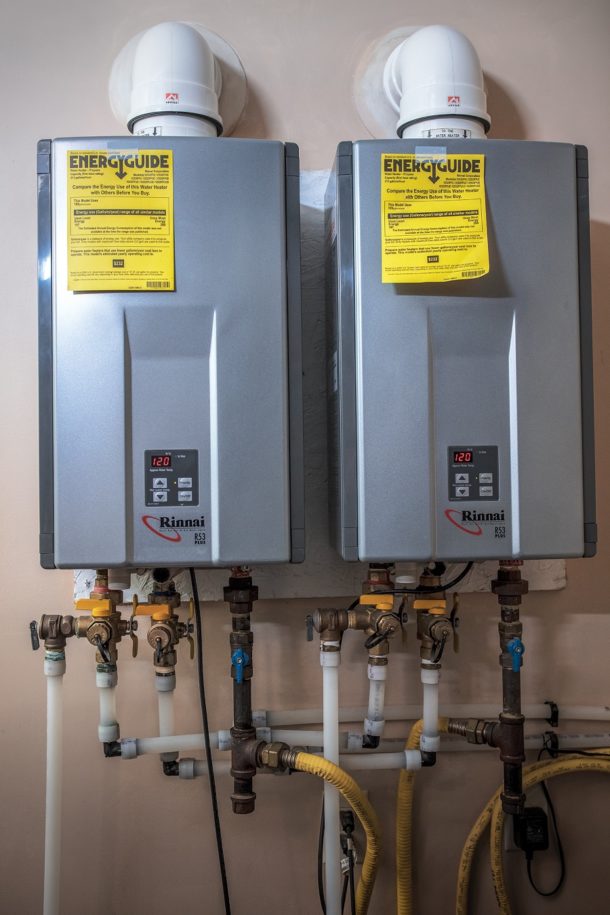When looking for a new plumbing product, what’s most important? For many, the decision comes down to whether the product works and is affordable – and rightly so. But to maximize your investment and ensure the job’s success long after you leave the jobsite, it’s important to dig deeper into the products you use and Read more
Industry Blogs
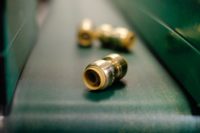
When looking for a new plumbing product, what’s most important? For many, the decision comes down to whether the product works and is affordable – and rightly so. But to maximize your investment and ensure the job’s success long after you leave the jobsite, it’s important to dig deeper into the products you use and the manufacturer that creates them.
And once you find plumbing manufacturers you trust, you’ll have more confidence in your installs and worry less about customer callbacks. It may sound tedious to research manufacturers, but the payoff — knowing they’re reliable — is worth the extra time.

So, how do you find trustworthy manufacturers? Start by asking the right questions:
Does the manufacturer have a proven track record of reliability?
Having a new product fail after installation isn’t a gamble any contractor wants to take. It should be a given that it was built to last.
When you install a product, you need to know it won’t fail. A reliable manufacturer ensures quality throughout production and creates products to comply with industry codes and standards.
This happens by:
- Choosing quality materials over cheaper materials.Instead of using lower-quality raw materials to save money, the manufacturer should use robust materials that last long after installation. And its product specs should be easy to find online to maintain transparency about the product.
- Performing rigorous independent testing.Each product should undergo months of repetitive and extreme testing to make sure it can be pushed to its limits without failing. Try to find what a manufacturer has to say about their testing process — and if it exceeds minimum testing requirements.
- Helping lead compliance initiatives.Manufacturers shouldn’t just produce products that comply with industry standards. Company leaders should participate in initiatives promoting safer products that are better for the environment, such as the IAPMO WE Stand Committee.
- Owning the manufacturing process. Manufacturers who own the production of their products from raw material to final product have more control over the product quality and when things need to be adjusted.
Does the manufacturer create products that work seamlessly with existing solutions?
As a contractor, it’s a must that new products can work well with the ones you already use. It’s the manufacturer’s responsibility to make sure their solutions complement not only those in the same product line but also ones from different brands and materials.

Does the manufacturer’s leadership spend time on the jobsite?
Manufacturers should constantly seek ways to improve plumbers’ jobs, and the only way to truly do that is to walk alongside them on the jobsite. The manufacturers you partner with should be asking about your biggest pain points and presenting real solutions.
And even if you’re not yet one of their customers, the manufacturer should make it clear how they support and communicate with contractors like yourself. Look for evidence of strong customer relationships by reading online reviews, testimonials, case studies and support pages.
Partnering with the Right Manufacturers
The next time you search for a new plumbing product, take time to consider the reputation and business practices of the manufacturers. You’ll end up with more reliable products that will, in turn, help boost your own reputation with your customers.
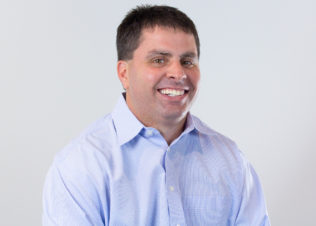 Chris Carrier is the Marketing Director, Americas at RWC – a market leader and manufacturer of water control systems and plumbing solutions for residential and commercial applications.
Chris Carrier is the Marketing Director, Americas at RWC – a market leader and manufacturer of water control systems and plumbing solutions for residential and commercial applications.

Finding and retaining customers in the plumbing industry is on the forefront of every owner’s mind. The days of expensive television commercials, billboards, and phone book ads are gone, but the idea of growing your business through digital marketing can seem overwhelming. Fortunately, there are many simple strategies you can start today to increase web Read more
Finding and retaining customers in the plumbing industry is on the forefront of every owner’s mind. The days of expensive television commercials, billboards, and phone book ads are gone, but the idea of growing your business through digital marketing can seem overwhelming. Fortunately, there are many simple strategies you can start today to increase web traffic and generate more customers. Read on to learn more about making the most of your digital marketing campaigns.
Why You Should Invest in Digital Marketing
Our industry is constantly shifting. From technology changes like the tankless water heater to aesthetic changes and global initiatives like water conservation. As we move to a more digital society, our approach to finding customers must shift as well. Traditional ads in newspapers, on television, and even direct mailers are expensive, and may no longer be as effective as they once were. In order to find new customers and retain existing customers, then, we must go where they are—online. These tips will help you to grow your business through simple digital marketing strategies.

Optimize Your Website for SEO and Local SEO
Because the majority of customers today look for service providers online, it’s critical that they find your plumbing business in a crowded market. If someone has a plumbing emergency, whether a leaking pipe, a broken water heater, or a clogged toilet, they probably aren’t going to scroll through several pages of results, researching multiple plumbers, so how can your website make it to the top of the list? Search Engine Optimization, or SEO, is essential to the process. A strong SEO strategy will help improve your online presence, bring more traffic to your site, and convert clicks to customers.
The ultimate goal of your SEO strategy will be higher rankings on search sites like Google. However, this can only be effective if your site has the content needed for customers to find you. Think about how your customers might search Google to find your business, whether they search “Leaky faucet Charlotte” or “Water heater repair Austin.” Service pages, then, are essential to SEO. Be sure the person in your city searching for help with a leaking faucet will find you through a dedicated service page for faucet repair, and anyone looking for what to do about a broken water heater can be directed to your site as well.
 You may also want to increase your local SEO through location pages. Don’t just dedicate your site to the city your business resides, especially if you want to reach customers in surrounding areas. Having unique content for each city, town, or neighborhood you want to target will help generate customers as well. Don’t underestimate the usefulness of blogs either. Short, 1,000-word pieces that can be updated often are another effective way to help customers find you. It might seem intimidating to take on blogging, but it doesn’t need to be. Your team has a wealth of knowledge on a variety of plumbing subjects, from the latest gadgets, to simple repairs, and even seasonal plumbing issues. The increased traffic your blog generates will also help to optimize searches in the future.
You may also want to increase your local SEO through location pages. Don’t just dedicate your site to the city your business resides, especially if you want to reach customers in surrounding areas. Having unique content for each city, town, or neighborhood you want to target will help generate customers as well. Don’t underestimate the usefulness of blogs either. Short, 1,000-word pieces that can be updated often are another effective way to help customers find you. It might seem intimidating to take on blogging, but it doesn’t need to be. Your team has a wealth of knowledge on a variety of plumbing subjects, from the latest gadgets, to simple repairs, and even seasonal plumbing issues. The increased traffic your blog generates will also help to optimize searches in the future.
Generate Leads with PPC (Pay-Per-Click)
Another cost-effective digital marketing strategy is PPC, or pay-per-click advertising. Unlike print media, where you will pay the same, often hefty, price for ad space regardless of how many people actually see it or act on it, PPC allows you to advertise your business on Google, but you’ll only pay an advertising cost when someone clicks on the ad! People tend to only research plumbing companies when they are in immediate need of service, which means you’ll pay for PPC only when there’s a high likelihood that you’ll generate business through the ad.
Not only is PPC cost effective, it’s extremely targeted. Your ad will only appear when potential customers search for plumbing services in your area. This means you’ll be reaching customers that are looking for service in the very near future, likely today. Unlike other digital marketing tools, you should see the results of your PPC right away, as well.
Humanize Your Business
In the plumbing industry, gaining and retaining customers is based on trust. People want to feel that they know their service providers and can trust them to do honest work. One way to establish trust with the community is to share your story. Every business has one. Use your digital marketing tools to explain how you got into plumbing and what drives your work ethic, as well as information about the team you’ve assembled to represent your brand.
One way to effectively humanize your business is through your blog. Showcase team members with years of experience and write about issues and trends in your service area. Use real photos rather than stock photos when possible, so customers can get to know you and your employees better. Find ways to serve your community as well. Volunteering your time or sponsoring a youth sports league are always beneficial to the neighborhoods you serve, but from a digital marketing perspective, you have options as well. Join local online forums and respond to questions in your skillset. Don’t simply provide your contact information, but add value to the conversation by giving experienced insight into common plumbing issues. When customers see you care about the community you serve, they are likely to remember your name when their own plumbing issue arises.
Establish a Brand Personality across Social Media Platforms
Most people today access at least one social media platform a day, and when utilized effectively, social media can be a great way to get your name out to potential customers. A strong presence on social media will help you get customers today and will keep you in the minds of prospective customers in the future.
These platforms can also be a quick and easy tool for communicated sales, promotions, or important news. Rather than updating your website, which can be time intensive, even for the tech savvy business owner, a simple post about discounts or promotions can be done in a matter of seconds, generating customers quickly. Most people immediately think of Facebook for promotion, but don’t underestimate Twitter, Instagram, and even YouTube. Once you’ve established your business on these platforms, be sure to include links in the footers of your website and emails as well.
Avoid Using Social Media Exclusively for Sales
While social media platforms are great tools for getting customers and promoting your business, it’s important to remember your long-term strategies and goals. You can certainly use your social media to communicate specials, but if that’s the only way you utilize these sites, you will lose the followers you worked hard to attain. Always remember to communicate your story to the community.
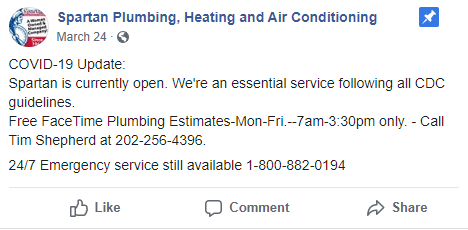
Use Facebook, for instance, to show the culture of your work family. It’s a great place to showcase a work anniversary or introduce a new employee. Instagram is the place to feature photos of recent installations, before and after shots, and new trends in the industry. People typically use Twitter to seek and share information, which gives your plumbing business the opportunity to provide general plumbing related tips, like which foods to avoid putting in a garbage disposal or even an article about how flushable wipes may really not be that flushable. Even YouTube can be used to engage the community by demonstrating some simple repairs. Use your customers as a guide. If they are asking the questions, chances are your followers have the same questions or concerns.
Utilize Email Marketing to Stay Top of Mind
Getting new customers is essential, but how can your plumbing business keep customers, especially when services calls are so infrequent? Fortunately, it can be easier, and often less expensive to retain existing customers. In addition to social media, email marketing is an effective strategy for customer retention. There’s no need to blast a customer’s inbox with spam, of course, but a simple monthly newsletter can be enough to keep you in the forefront of your customers’ minds. You can include monthly specials, publish your recent blog post, and even share reviews from satisfied customers. Subscribers will then know just where to go when a plumbing issue arises.
Growing Your Business through Digital Marketing
In today’s online economy, digital marketing is the best way to reach new customers and keep them as well. With so many people heading to the computer or smartphone to find service providers, it’s important to make it easy for them to find you in a crowded field. Utilizing SEO strategies, PPC, social media, and even email marketing will ensure customers find you the first time and return to you every time they need a trustworthy plumber.
Consider implementing some of these digital marketing strategies to grow your plumbing business today and if you’re reading this, connect with the Mechanical Hub team as they are leaders in the industry.
Author Bio: Alan Smith is the Marketing Coordinator of Spartan Plumbing, Heating & Air Conditioning. Spartan is a leading plumbing / HVAC company that assists all types of businesses and residences throughout the Washington D.C. region and parts of Maryland. Spartan has an A+ rating by the Better Business Bureau and was voted Best Plumber in D.C. for four years in a row.
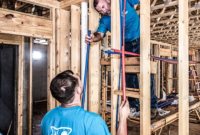
In response to the coronavirus outbreak, plumbers are looking for ways to work more efficiently and adapt to customer needs. But with people observing social distancing requirements and other precautions, we need efficient solutions more than ever. A Snapshot of the New Normal As a plumber, how has your day-to-day routine changed? Even as a Read more
In response to the coronavirus outbreak, plumbers are looking for ways to work more efficiently and adapt to customer needs. But with people observing social distancing requirements and other precautions, we need efficient solutions more than ever.
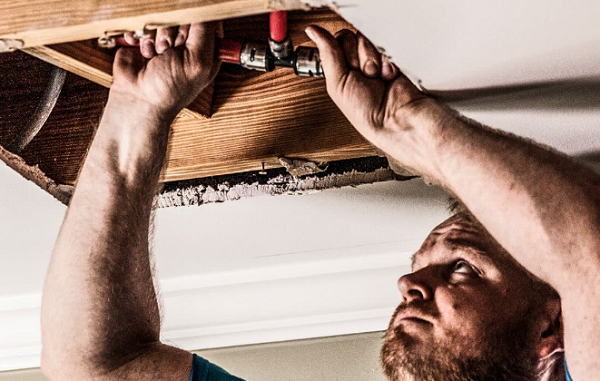
A Snapshot of the New Normal
As a plumber, how has your day-to-day routine changed? Even as a manufacturer of plumbing solutions, we’ve noticed a change in the way our customers work. In the past few months, pros have shared several important trends they’ve noticed:
- Scheduling around other pros on jobsites. With the introduction of staggered shifts in certain construction markets, pros are having to coordinate time around other trades. They can no longer come and go on jobsites as their schedule allows. It’s critical to set a schedule and stick to it. If a firestop installation takes longer than expected, for example, the delay could throw other contractors off schedule.
- Making faster residential service calls. Because of social distancing requirements, plumbers working in homes need to get in and out quickly to keep customers comfortable and reduce the risk of spreading or getting the virus. They need ways to make repairs and install fixtures as quickly as possible without sacrificing quality.
- Conducting virtual consultations and meetings. On websites and social media profiles, some plumbing contractors are inviting customers to schedule a virtual consultation through video conferencing platforms like Zoom. During the appointment, the customer can explain the issue they’re having and receive an initial quote. This reduces time in-home and can ensure efficiency.
- Installing more touchless faucets. Not surprisingly, reducing the spread of germs and viruses is currently top-of-mind for most consumers. Some plumbers have noticed an increase in requests for touchless faucet installations from health-conscious homeowners.
While the pandemic highlighted the need for solutions that get pros in and out faster and help them adapt to shifting customer needs, it’s difficult to make changes in a short amount of time. In some cases, pros don’t have time to perform services in the exact same way as they did six months ago.
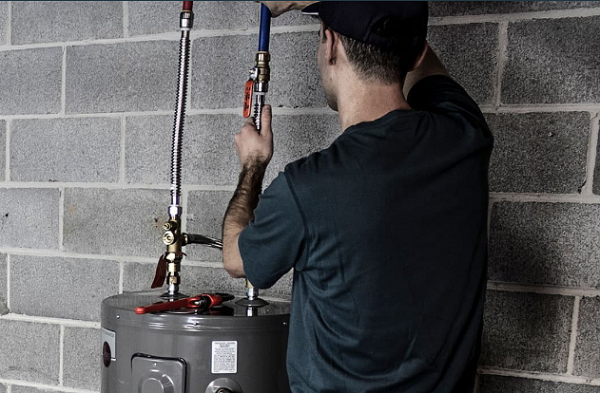
At RWC, we’ve always offered solutions that make plumbers’ jobs more efficient, like durable SharkBite push-to-connect fittings and HoldRite firestopping systems. But the past few months has reinvigorated our mission to develop safe, sustainable and efficient solutions. We’re seeking ways to design even more products that cut down on installation without reducing quality and craftsmanship.
So… Where Do We Go from Here?
We can’t pretend to know what the plumbing industry will look like in a month, six months or even a year. Will plumbers continue working around social distancing requirements? Will customer demand for hygienic products like touchless faucets increase?
No matter what the next few months bring, we believe efficiency and adaptability are permanent fixtures. As you continue to improve services for customers, we will support and empower you with plumbing product innovations.
 Chris Carrier is the Marketing Director, Americas at RWC – a market leader and manufacturer of water control systems and plumbing solutions for residential, commercial and industrial applications.
Chris Carrier is the Marketing Director, Americas at RWC – a market leader and manufacturer of water control systems and plumbing solutions for residential, commercial and industrial applications.

Ductwork Learnings on HVAC and Aging in Place The term “aging in place” refers to homeowners’ ability to stay in their home as they age. But what’s good for a homeowner, may not be good for a home’s ductwork system. As homes built during the housing boom of the late 1990s and early 2000s age Read more
Ductwork Learnings on HVAC and Aging in Place
The term “aging in place” refers to homeowners’ ability to stay in their home as they age. But what’s good for a homeowner, may not be good for a home’s ductwork system. As homes built during the housing boom of the late 1990s and early 2000s age, many of these homes’ ductwork systems – particularly in areas such as the deep south – are beginning to show their age.
While HVAC contractors understand the benefits of replacing aging, less efficient HVAC equipment, what about the unseen parts of the comfort system? Even the highest performing, most energy efficient system will not deliver optimal performance if the invisible network of ducts that distribute air to every room in a home are damaged, leaky, or poorly connected.
Aging ductwork is a key concern in many housing markets that experienced robust growth during the housing boom – Southern Florida, Phoenix and Las Vegas, for example. Ductwork in many of these warm region homes is located in the unconditioned attic space, where it is out of sight and not subject to routine maintenance.
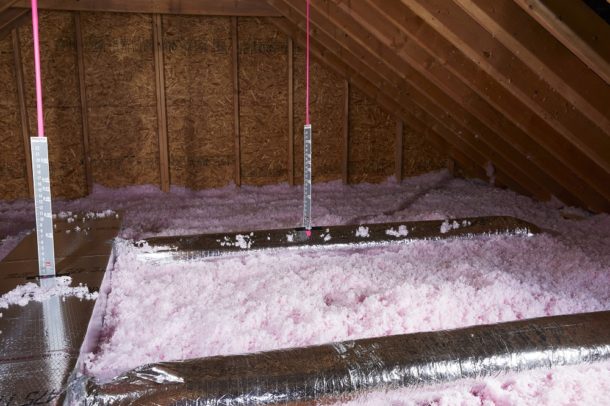
The integrity of a home’s ductwork in unconditioned spaces can have a big impact on comfort, energy, and efficiency. Offering duct inspections and retrofits can help contractors optimize their customers’ comfort while generating an additional source of revenue for the business.
Owens Corning recently piloted a duct retrofit service with five HVAC contractors in Florida. The objective was to understand homeowners’ interest in ductwork -and evaluate conditions in aging homes. The HVAC ductwork inspection evaluated key ductwork areas, with a focus on helping stop the spread of airborne pollutants and unwanted noise while improving home comfort and efficiency:
Ductwork inspections reviewed:
- Duct insulation integrity
- Interior duct condition
- Exterior duct condition
- Sealing around duct joints
- Evaluation of output efficiency
Contractors in the pilot found that a home’s ductwork is an overlooked opportunity to add comfort and support homeowners in creating comfortable environments. Few homeowners are aware of the role their home’s ductwork plays in facilitating comfort, air flow and the spread of airborne pollutants. Contractors also found that speaking with customers about their home’s ductwork, conducting a duct inspection, determining if the duct is sized properly, and explaining the benefits of a duct retrofit helped generate new business opportunities.
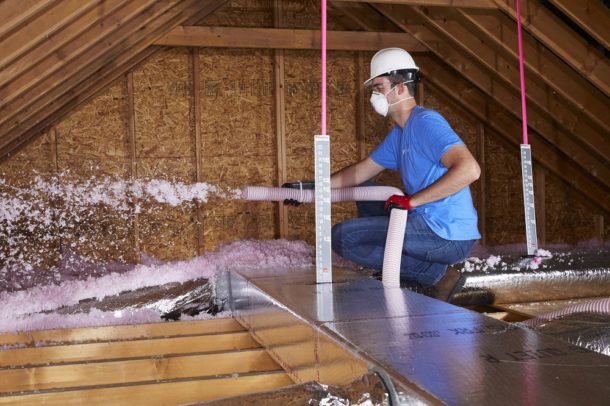
Pilot participants found that a good place to start the conversation with homeowners is by reviewing a checklist of signs suggesting duct problems. These signs may include:
- Musty smell
- Excessive dust
- Mold/mildew or visible “dirt” around vents
- Condensation on (or near) AC unit cooling coils
- Frequent cycling
- Hot or cold spots
- Visible ductwork damage
While many homeowners take great pride in having the most energy efficient cooling equipment, they will not enjoy the benefits of their investment if their ducts are leaking. In fact, the typical house loses up to 30% of the air in ducts due to leaks and holes in ductwork. Today’s HVAC equipment is more energy efficient than ever, standing up to today’s vigorous code environment and weather that seems to keep getting warmer. But as American homes age and energy codes are stricter, the ductwork distributing air is not keeping pace.
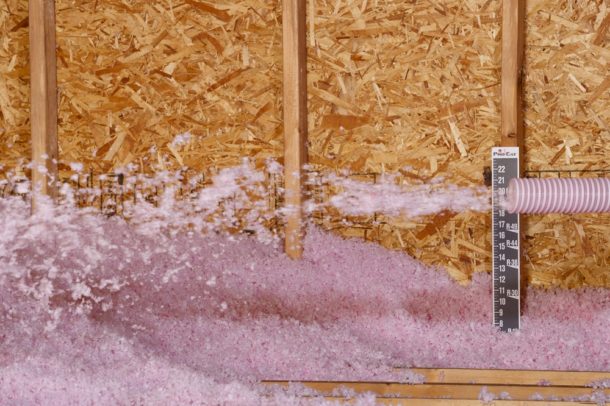
To learn more about Owens Corning’s air distribution services and how duct retrofit can support your business and the homeowners you serve, contact Duct Retrofit Program Business Development Leader Dave Pawlicki at dave.pawlicki@owenscorning.com
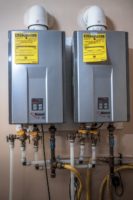
Propane tankless systems are an efficient, affordable solution for any project What is your customer’s biggest water heating concern? Running out of hot water? Rising utility costs? Environmental sustainability? Builders, remodelers, and contractors can address any of these concerns by helping customers select a high-efficiency propane tankless system. Tankless technology is becoming increasingly popular because Read more
Propane tankless systems are an efficient, affordable solution for any project
What is your customer’s biggest water heating concern? Running out of hot water? Rising utility costs? Environmental sustainability?
Builders, remodelers, and contractors can address any of these concerns by helping customers select a high-efficiency propane tankless system. Tankless technology is becoming increasingly popular because of its versatility, convenience, and efficiency in both new construction projects and as retrofits to existing systems. These systems offer reduced energy costs, a long service life, and high volumes of hot water — and propane units provide a level of performance that electric and heating oil systems just can’t match.
But there are still some common misconceptions that can keep professionals and their clients from upgrading to a tankless water heater.
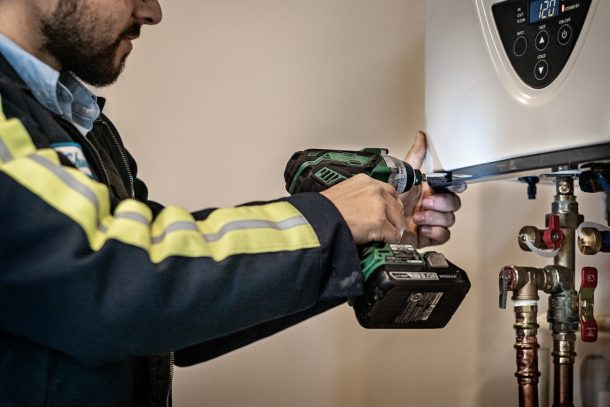
Here are four common tankless myths, debunked:
MYTH: Tankless water heaters are too expensive.
For some customers, it’s hard to look past the upfront cost of a high-efficiency tankless water heater, but it’s important to consider the system’s annual cost of ownership (ACO). Tankless water heaters reduce energy costs by up to 50 percent compared with storage tank water heaters and eliminate standby energy loss from the tank, as well as the unnecessary expense of heating water when it’s not being used — which ultimately reduces water heating bills. High-efficiency units pay for themselves in just a few short years — which is a big win for contractors and their customers. Big picture, they’re a smart investment. Plus, there are great rebates available to help bring the costs down.
In a 2015 comprehensive analysis of residential water heating systems, two propane tankless systems were found to offer the lowest ACO in eight out of nine scenarios covering different climate and housing types when compared with electric water heaters, heat pump water heaters, and heating oil systems. Propane tankless’ cost-effectiveness stems from the system’s low annual energy costs and long service life of roughly 20 years.
MYTH: Tankless water heating requires natural gas.
By incorporating propane into a project, construction professionals and contractors can give their clients the same luxury, performance, efficiency of a natural gas tankless system — no matter where the house is located. There are still a lot of builders that are building in rural areas where the natural gas line isn’t available and instead using electric tanks. They are simply not thinking of propane tankless just because it’s not as common.
What many builders and contractors may not realize is how construction-friendly this energy source is. Propane is used much like natural gas and is easy to incorporate into a project. Plus, with propane, professionals and their customers aren’t at the mercy of a public utility. Meanwhile, performance is never sacrificed. Propane tankless water heaters provide an endless supply of hot water, averaging about 222 gallons per hour, compared with an average first-hour delivery rating of just 62 gallons per hour for electric storage tank models.
MYTH: Tankless systems require complicated venting.
Venting for propane tankless systems is flexible, easy, and inexpensive. Given the unit’s compact size and direct-vent design, they can be installed in closets, tight spaces, and even outdoors. Upgrading from an electric tank to an interior propane tankless system may require a little more planning, but high-efficiency units can be vented straight through the wall with inexpensive PVC pipe.
MYTH: Tankless won’t work with well water.
Tankless is a great option for customers, whether they use city water or well water. When a water heater heats water, a small amount of scale can form on the heat exchanger, so periodic flushing is required to keep tankless water heaters functioning at their best. Homes with harder water or more usage will have more scale, but city water versus well water won’t affect this. Many modern tankless systems will notify the homeowner when they need to be flushed or can even be set up to notify a technician when maintenance is required. Regardless of the water source, a water softener can greatly reduce the scale created, allowing for much longer intervals between flushing. And maintenance is key — if properly maintained, propane tankless units last twice as long as traditional tank systems.
Don’t let customers settle when it comes to water heating performance for their home — and for many projects, this means choosing the limitless hot water delivery and efficiency of a propane tankless water heater. Visit Propane.com/Water-Heating to learn more.
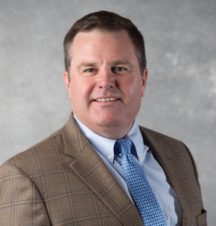 Bryan Cordill is director of residential and commercial business development for the Propane Education & Research Council. He can be reached at bryan.cordill@propane.com.
Bryan Cordill is director of residential and commercial business development for the Propane Education & Research Council. He can be reached at bryan.cordill@propane.com.

